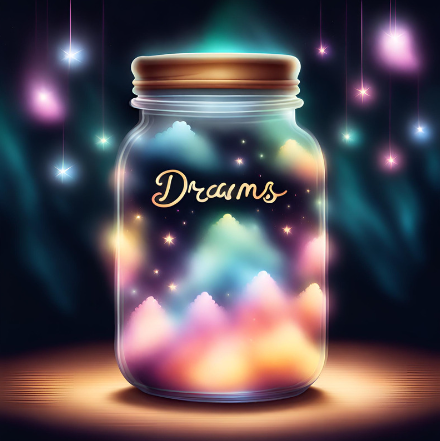By: Emery W.
Introduction
Everyone knows what dreams are. But what are they really? Dreams can be good for you, but also sometimes harmful. You may not even remember your dreams, but why is this all true?
According to Medical News Today, “Dreams are a universal human experience that can be described as a state of consciousness characterized by sensory, cognitive and emotional occurrences during sleep.” To simplify it, this means that you are still conscious, but you are in a different state of consciousness then when you are awake. It’s when your mind is processing your thoughts and feelings for the day.
Nightmares, on the other hand, are dreams that are caused by stress, anxiety, fear, trauma, illness, and more. But all dreams including nightmares have a purpose.
About Dreams
You can dream at any time when asleep, but your most vivid dreams happen during REM (Rapid Eye Movement) sleep. This is when your brain is the most active. When this happens, your brain looks very similar to your brain activity when you are awake. Dreams can also affect your emotions. According to Sleep Doctor, “emotions from both good and bad dreams can carry over and affect their mood the following day.”
Interpreting Dreams
There are several common dreams such as falling, being chased, failing a test, flying, losing teeth, being naked in public, being late, being dead, and even more. But all these dreams have a meaning. Many different meanings can come from just one dream.
For example, If you had a dream about being chased off a cliff then falling, that could mean that you have lots of anxiety, and want to run away from a problem, and you have a loss of control in your life.
According to Very Well Mind, here are four steps to interpreting dreams:
“1. Condensation: Many different ideas and concepts are represented within a single dream. Information is condensed into a single thought or image.
2. Displacement: This element of dream work disguises the latent content’s emotional meaning by confusing the dream’s important and insignificant parts.
3. Symbolization: This operation also censors the repressed ideas in the dream by including objects meant to symbolize the latent content of the dream.
4. Secondary revision: During this final stage of the dreaming process, Freud suggested that the bizarre elements of the dream are reorganized to make the dream comprehensible, thus generating the dream’s manifest content.”
According to viscosoft, here are a few examples of common dream symbols:
- Falling can mean you have a loss of control or insecurity in your life. But, can also mean you have to make an important decision and are afraid to make the wrong decision.
- Being chased can mean that you are running away from a situation, or are afraid of being discovered. It might also mean that you feel threatened and need to defend yourself.
- Being naked in public can reflect feeling vulnerable, and exposed. It can also mean that you feel judged or afraid of rejection.
- Losing your teeth can be a sign of stress or anxiety. It also might mean that you have a loss of self-confidence, or worry about your appearance.
- Being late can mean that you are afraid of missing an opportunity or overwhelmed with your responsibilities, or lack of confidence in your abilities.
- Flying is often associated with feelings of freedom and power, feeling capable of tackling obstacles, and taking control of your life. However, it also can mean that you are avoiding something, or escaping a difficult situation.
- Being locked up can be a sign that you feel trapped or unable to escape a difficult situation. It may also reflect a fear of the unknown or dreading of the future. It may indicate needing more independence and freedom in your life.
Sources:
- https://www.ted.com/talks/amy_adkins_why_do_we_dream?language=en
- https://www.medicalnewstoday.com/articles/284378
- https://health.clevelandclinic.org/why-do-we-dream
- https://my.clevelandclinic.org/health/body/12148-sleep-basics
- https://www.webmd.com/sleep-disorders/dreaming-overview
- https://chambersandblohm.com/lets-talk-aboutdreams/#:~:text=The%20average%20person%20has%20three,typical%20two%20hours%20of%20REM.
- https://sleepdoctor.com/dreams/mental-health-and-dreams/#:~:text=For%20example%2C%20some%20people%20report,health%20issues%20like%20self%2Dharm.
- https://www.sleepfoundation.org/nightmares
- https://www.verywellmind.com/understanding-your-dreams-2795935
- https://www.verywellmind.com/dream-interpretation-what-do-dreams-mean-2795930
- https://viscosoft.com/blogs/dream-journal/the-10-most-common-dreams-and-their-interpretations


Comments are closed.